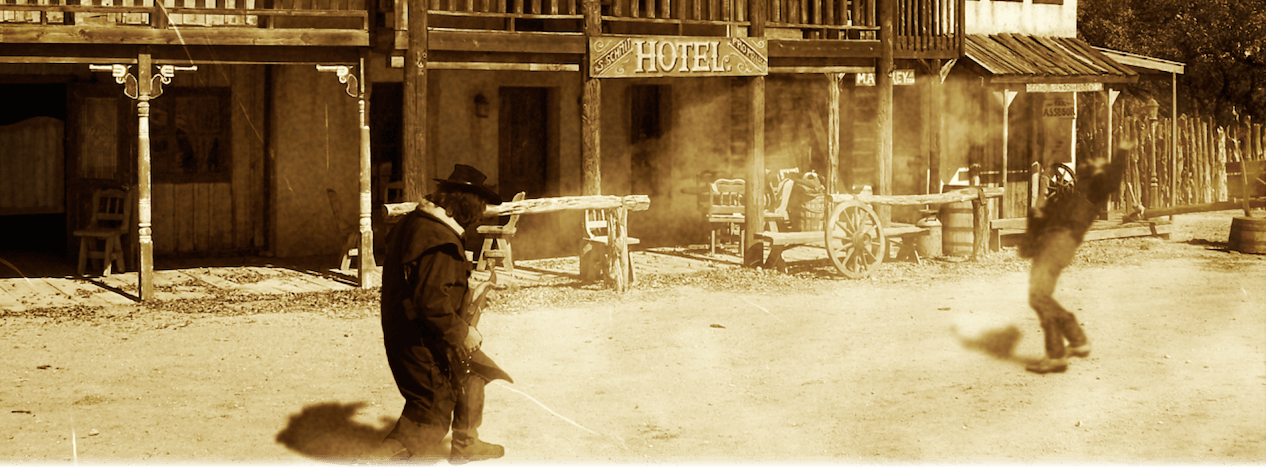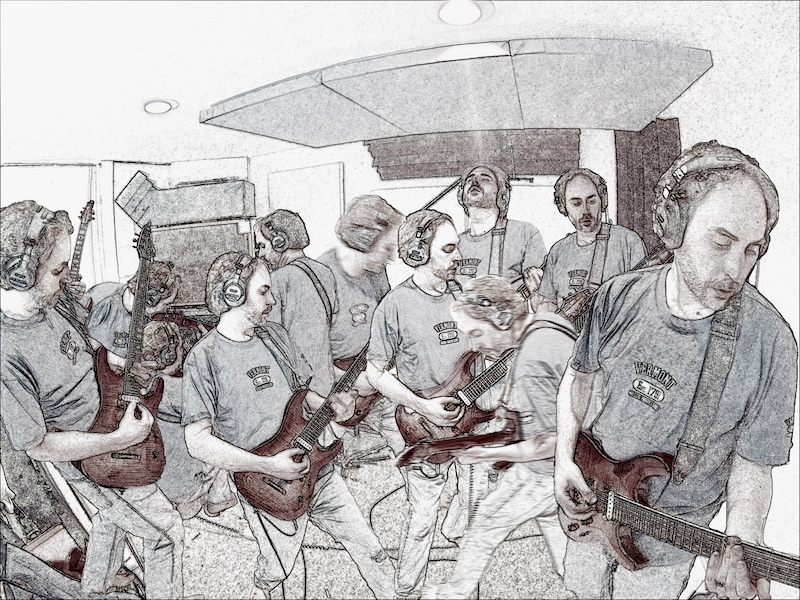
The writing process for Crush began with the premise of four guitar players spread out in a large room all simultaneously playing the same 'crushing', hard rock guitar riff in perfect unison. The intent was to create a massive wall-of-guitar sound that would emanate in full surround sound glory from both the front and rear speakers of a home theater system. With traditional stereo recording, many producers will often have guitar players perform their parts twice and then split the resulting tracks between the left and right speakers. The effect, commonly referred to as "double tracking", produces a thick, full-sounding recording, and can be heard in some form or another on just about every commercial recording released since the early 1980's. I've long been a fan of this type of guitar sound, so when it came time to lay down tracks for HTEC, it was only natural that the first thing I wanted to try was quadruple-track and mix a hard-hitting riff especially for home theater playback!
The massive 24-guitar orchestral arrangement heard in the song’s introduction pays homage to the classic surround sound promo trailers we all know and love to hear at the start of each movie.
Performing the same riff exactly the same way twice can be a difficult feat to achieve, never mind doing so four times. To create a tight, punchy-sounding guitar riff through double-tracking, your fret-hand technique must be spot-on and your timing impeccable. To help serve as my muse and inspiration for recording this track, I often imagined what it would sound like were it to be played by (former) Ozzy Osbourne guitarist Zakk Wylde, whose uncanny ability to produce near-perfect copies of his own takes helped produce some of the heaviest sounding guitar riffs of the late 80’s and early 90’s.
Crush never started out as a composition so much as it was a sonic experiment, and is the only track on Home Theater Ear Candy (re-titled as Surround Sound Ear Candy for tvOS) which did not have a song arrangement in place ahead of recording. Upon successful completion of recording my Zakk Wylde-inspired quadraphonic guitar riff, I was now faced with the new challenge of writing and recording a full-fledged composition around the clip. I continued on writing the verse and bridge-style sections for the song, attempting to match the production style with the writing. I used simplified monophonic or stereo-type production techniques for the quieter “verse” sections while exploding the arrangement into full-on surround for the more dramatic chorus-style sections. Throughout the writing process, a theme eventually emerges where a bluesy, slide-guitar melody plays the role of sonic foil against the quadraphonic guitar ensemble, serving the perfect vehicle with which to play out the contrast between simple and complex production techniques. This blues vs. rock tension later culminates in the fiery exchange of licks between the two guitars in the song’s solo section.

• The intro to Crush begins with a lone slide guitar melody, produced to loosely resemble a monophonic, scratchy-sounding 1950's AM radio broadcast. As the slide moves up the guitar neck for the opening section’s final chord, the antique style-production melts away, morphing into a 32-guitar orchestra presented in 21st-century surround production.
• The scratchy, percussive-sounding guitar effect you hear throughout the second verse was produced by combining performance techniques Eddie Van Halen and Jimmy Hendrix used (respectively) for their songs "Atomic Punk" and "Voodoo Child (Slight Return)." The Van Halen-style palm rubs drenched with phaser pedal effect appear in the right speakers and slightly towards the rear, while the Hendrix-like strumming with wah-wah pedal is positioned to the front and left side of the surround soundstage. Working my way through the writing and recording process for Home Theater Ear Candy (re-titled Surround Sound Ear Candy for the tvOS app version), I felt compelled to pay homage to some of my earliest musical influences who help shaped me as a musician. I loved how these two different techniques blend together sonically, and affectionately refer to this section as Eddie V. Hendrix.
I had a bit of fun with the cover art, which depicts a western duel, though played out with guitars in place of guns! Here, guitarists in the 23rd century travel back in time to settle their differences on the dusty street of an abandoned western town. Unbeknownst to the contestants, their photograph has been captured by the town’s sole camera owned by an undertaker’s assistant who had returned to document his former town’s state of disarray. Upon spying the unusual showdown, the apprehensive, yet curious citizen quietly sets up his camera just inside the doorway of a darkened saloon entrance to snap his shot. The resulting photograph captures how the guitarist on the left has “cheated” the contest by modifying his axe to produce directionalized sub-sonic frequencies strong enough to knock his competitor off his feet!
5.1 surround versions available exclusively on the Apple iOS and tvOS Apps Stores (see the Apps page for more info)